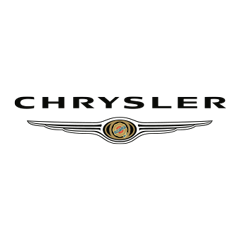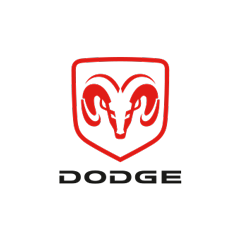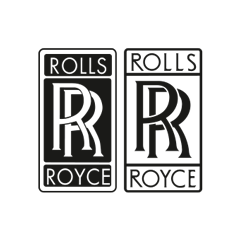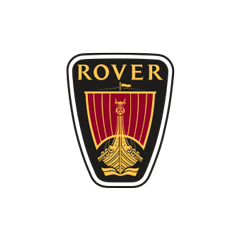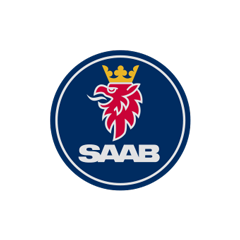
MERCEDES BENZ SL-Klasse
Generations Timeline, Specs and Pictures

The SL offered the unique choice of a luxurious personal roadster with a retractable hardtop in the Mercedes-Benz lineup, and the 2016 model was no exception.
Mercedes-Benz brought the facelifted version of the SL just in time to spend the 2016 summer under the blue sky with a new model year. Its retractable hard-top was one of the features that made it a best-seller in the GT class.
Its redesigned front fascia sported a 3D design on the grille and kept the horizontal slat that supported the three-star badge. With its new LED headlights and intelligent lighting system, the 2016 SL offered more confidence during night driving situations. The aerodynamically profiled front bumper featured two side-scoops to cool the disc brakes and a centered, trapezoidal-shaped grille at the bottom. On the hood, the designers made two power-domes evoking the car’s sporty character. In the back, Mercedes-Benz added further modifications to the completely red taillights, unlike the 2012 model that featured a clear upper section. Finally, the triangular, flat exhausts replaced the rectangular ones and flanked the new splitter installed under the bumper.
The dashboard featured a binocular-style design for the instrument cluster, with the tachometer and speedometer combining the classic analog look with modern technologies. There was a new sporty design for the dials and needles. A TFT multi-function display found its place in the middle, between the circular instruments.
Under the hood, the 2016 SL offered a choice of two engines: the upgraded 3.0-liter V-6 for the base version and a 4.7-liter V-8. Both turbocharged engines provided more power to the new 9G-Tronic (dual-clutch) gearbox. Mercedes-Benz enhanced the Active Body Control system for higher cornering speeds and more comfortable rides as well.

With the completely redeveloped sixth generation SL, Mercedes-Benz continues a tradition that began 60 years ago.
The letters “SL” have ever since been synonymous with a symbiosis of sportiness, style and comfort – and with groundbreaking innovations. The new Mercedes-Benz SL has been produced for the first time almost entirely from aluminium and weighs up to 140 kilograms less than its predecessor. Its highly rigid all-aluminium bodyshell provides the basis for agile, sporty handling that has been taken to an entirely new level, coupled with exemplary roll characteristics and ride comfort. Even better driving dynamics come courtesy of the new BlueDIRECT engines; they are more powerful yet at the same time up to 29 percent more economical than the engines in the outgoing generation. Other new features include the unique FrontBass system, which turns the luxury sports car into a concert hall regardless of whether the top is open or closed, and the highly efficient adaptive windscreen wipe/wash system MAGIC VISION CONTROL; it supplies water from the wiper blade as required and depending on the direction of wipe.

The revised SL Class came storming the automotive doors in the middle of a world financial crisis.
But its customers didn’t seem to be scared away by it and the car was well received by the market.
The SL was one of the cars that made the Mercedes-Benz brand famous in the automotive industry. The “Gullwing” was just an example. For the 2008 model, an aggressive styling and improved engine range led to a more appealing roadster. The retractable hard-top was a unique feature in its market segment.
On the front, the new headlights were swept-back over the fenders. Not all the customers were delighted by the new look. Unanimous approval was for the new grille with a big badge in the middle and two silver wings on its sides. The two power domes on the hood and the side vents on the front fenders paid homage to the first SL. In the back, the diffuser bumper with motorsport inspiration and the trapezoidal pipes enhanced the design.
The interior was designed to balance the sportiness and comfort offered by the roadster. A new airscarf system was fitted as standard for the entire range. That, blew warm air to the neck of the occupants to compensate for the cold air draft. The car featured a new design for the instrument cluster, with chronograph-inspired dials.
For 2008, the SL featured two new V6 engines. The base model was the SL280 with a 3.0-liter unit that offered 231 hp. Next in the line was the SL350 with a 3.5-liter displacement that offered 316 hp and could rev up to 7.200 rpm. The top-model was the 5.5-liter twin-turbo V12 on the SL600. All versions were fitted as standard with an automatic transmission.

Mercedes-Benz introduced the fifth generation of the SL roadster in 2001 at the Frankfurt Motor Show and, by 2006, it was already time for a refreshed version.
When the carmaker decided to drop the canvas-top and replaced it with a retractable hard-top, its customers were happy. That was one of the most important advantages of the SL over its main competitors on the market. Another benefit was the adequate engine range. When the facelift occurred, the engines were replaced and got cleaner, more fuel-efficient.
Mercedes’s design department didn’t seem to spend too many hours refreshing the car’s exterior. They removed the pinned-out bumper, installed a more common one with a curved lower area, and changed the headlights. Another change was on the grille, which sported a three-slats design instead of four-slats as the 2001 model. In the back, the carmaker changed the taillights, adding larger clear areas for the reversing lights.
Inside, the most noticeable difference was on the center stack, which received a new infotainment system. It was still with navigation, but it included an aux-in in the glove-box, and the screen and buttons received a new design.
There was a major revamp for the V-6 and for the V-8 versions under the hood, which gained more power got better performances. The V-12 version, named SL600, kept the same power as before but earned on the torque department leading to better 0 to 60 mph (0-97 kph) times.

The 2001 SL was a mix between advanced technologies, performance, and comfort; all packed together into a sexy, open-top roadster fit for long cruises.
Mercedes-Benz introduced the SL (W230) in July 2001, and its look was miles away from its predecessor. The car featured adaptive cruise control, automatic emergency call, the COMMAND infotainment system, and a tire-pressure monitor. In the beginning, the carmaker offered only the SL500, followed by the SL55 AMG in the same year and by the SL350 in 2002, and the twin-turbo SL600.
The car’s exterior continued the idea of twin headlights introduced by the E-Class in 1995 with individual headlamps and continued by the C-Class in 2000. On the SL, the carmaker made it better with clear lenses. Depending on the options, it featured Xenon headlamps. Its grille sported four chromed slats while on the front fenders, the twin-slats vents that resembled the SL300 from the ’50s. Unlike its predecessor, the 2001 model featured a retractable hardtop, which completely disappeared under a tonneau cover behind the cabin.
Inside, Mercedes-Benz installed a leather-clad interior with sport bucket seats. A tall center console divided the cabin in two. In front of the driver, the carmaker installed a four-dial instrument cluster with a unique design. In the center, the carmaker added the speedometer and the tachometer, flanked on the outer sides by the fuel-gauge coolant-temperature gauges. The driver needed only 16 seconds to retract the roof at the touch of a button. Mercedes introduced an option for a glass roof in 2002.
Under the hood, the carmaker installed four engines ranging between a 3.7-liter V-6 and a 5.5-liter V-12. The former was the only one available with a manual transmission. All other versions were paired as standard with a five-speed automatic transmission.

It was the last stint for the fourth generation of the Mercedes-Benz SL, which brought a final set of innovations to the famous German roadster.
Mercedes-Benz SL appeared for the first time in 1954 after the American importer Max Hoffman convinced the German carmaker to build an open-top, two-seat, luxury roadster. He gave the nameplate idea to the carmaker. That’s how the legendary SL (Sport-Leicht or Sport-Light) was born. In 1989, the fourth generation was one of the fastest and luxurious roadsters on the market.
Unlike any other Mercedes-Benz available, the SL was built as a Grand Tourer, with room for two, a long hood, a short cabin, and an even shorter trunk. Its thick and raked A-pillars served as a safety arch to protect the occupants in an unlikely roll-over situation. In 1998, the carmaker introduced the SL’s final facelift, which brought body-colored door handles and different, rounded taillights. The side-vents behind the front wheel-wells were different, with two more sweeping cuts instead of three narrower ones as before.
Inside, Mercedes-Benz changed the interior almost completely. The dashboard looked similar, but the instrument cluster featured silver rings around the dials. Depending on the version, the car sported wood-trims or aluminum ones. For the sound system, Mercedes-Benz switched to the fiber-optic network instead of copper-based wiring, closely working with Bose for an excellent sound experience.
Under the hood, Mercedes-Benz offered four gasoline engine choices ranged between 204 hp and 394 hp. The latter was found on the S-Class as well. Another improvement was the introduction of the 5G-Tronic automatic gearbox.

Six years after its launch, the R129 saw a second mild renewal comprising slight visual changes.
In order to stay in line with competition, the car received new head and taillights as well as a range of standard safety features comprising side air bags and ESP among others. In addition, comfort was kicked up a notch with the introduction of lazy-friendly automatic climate control and seats that feel almost as that couch at home. For an extra fee, buyers could also fit their cars with HID headlights and a full-glass hardtop to enhance the car’s “wow” factor.

The SL emerged as a beautifully styled coupe at the end of the ’80s having quickly made headlines around the world throughout its production time of 6 years.
The SL was available in different versions and power outputs from the base 300SL (190hp for the European model/228hp for the US) to the 500SL which delivered 322hp thanks to its 5.0 L petrol unit with a V8 cylinder configuration. The specs on this particular model were very high on both European and North American markets with the car having been released with standard electric windows, mirrors, roof and seats.

In 1971 the Mercedes-Benz SL “Pagoda” was still in production when the new, R107, SL was introduced to the public in the spring of 1971.
It wasn’t a big success in the beginning, but it ended up as the car with the longest lifespan in the Mercedes-Benz stable, behind the G-Class. Its predecessor was a big success and even in 1971 it was in high demand from the market. In fact, both cars were produced on the same time for a few months in 1971. But then, the R107 picked-up more orders.
The car featured a different front end, with horizontal headlights that ran around the corners, on the fenders, with the turn-signal lamps. Like its predecessor, the SL was a two-seat with a retractable canvas top and removable hardtop. However, the 1971 model, represented a departure from the uncompromisingly hard sports car, in favor of a more comfortable yet powerful luxury roadster.
Inside, there was a luxurious cockpit, that featured air-conditioning, leather seats, and a car stereo. The new deflector profiles on the A-pillars kept the side windows clean and the wind outside the cabin too.
The front and rear suspension were basically the same as the “Stroke Eight” models. The car was produced until 1989 and, along its long timeline, it received numerous upgrades including underparts from the W124 model.

The W113 name-tag indicates a range of vehicles produced from 1963 to 1971 sold as the SL Pagodas.
The name is derivative from the car’s high and sleek roof that, if seen from the sides, looks as if it just hung over the rest of the car having been linked to the rest of the body only through the tonneau and a slim B-pillar that looks rather like a design element. These exotic coupes were also available with a soft-top and removable hard-top with the latter having also been dubbed as the “California Coupe”. All models came equipped with an inline six-cylinder petrol unit, rear-wheel drive and a live rear axle.

Rarer than its soft-top stablemate, this coupe-styled car complemented the Mercedes Benz line-up at the time.
Slotted as a premium car, the 300 SL Roadster Hardtop further cemented the company’s newly acquired image of a posh car manufacturer. Only minor differences existed, the first that comes to mind having been the absence of a folding-roof system. This wasn’t necessarily an issue although it was very unpractical since the driver had to get out of the car and manually remove the top. Otherwise, it was the same, beautifully designed and nicely-running car that made history.

The 1957 Mercedes-Benz 300 SL was the open-top version of its well-known brother, the 300 SL Gullwing.
But it wasn’t a bad brother and according to some, the roadster was an easier car to live with due to the much better access. It was the fastest roadster of its era, and one of the best looking cars in the world.
A hard top was either offered as an option or came standard, depending on the market. As an option, the customer could have a set of suitcases that matched the trunk space. On the option list was also the Becker Mexico radio, which was more refined than a top-notch infotainment system from today.
The dashboard was very simple, yet with a lot of information. In the center there was a water temperature gauge, oil temperature, oil pressure, fuel level, and warning lights. It was the information center of its time. The bucket seats were standard, and so was the leather upholstery. It had a speedometer dialed up to 160 mph (250 kph in Europe).
The engine was a masterpiece of its time. The naturally aspirated inline-six featured a dry sump lubrication system and a direct injection (mechanical) system that was first used on Daimler airplane engine in World War II. And it was in 1957, just to remember.

The legendary SL was launched in 1954 and opened a new chapter in automotive history.
It marked the beginning of “Gullwing” doors and remained a source of inspiration for the following generations. The SL initials come from the words “Sport Leicht” (Sport – Light).
The car’s origins are based on the baed on the Mercedes-Benz W194 race-car that was raced by an American automobile importer, Max Hoffman. He convinced the board to produce a road-going version for the W194. The only problem with the coupe-version of the race-car was that the entire structure forced the manufacturer to build a higher door-sill. But they still needed to install a door for the driver. The solution was a Bugatti Type 64 model since 1939 with the doors hinged on top of the car. This is how the gullwing doors appeared.
The engine was a masterpiece of technology. After Maserati built the gasoline direct-injected units for its race-cars with the Lucas technology, Mercedes-Benz tried the same with Bosch. And they had success. The inline-6 engine, direct-injected, with a 3.0-liter displacement, offered 215 hp, a huge value for the era. The 1954 Corvette had a 157 hp from a 3.9-liter engine.
The SL Gullwing, as it is known, had a short lifespan, being produced only three years, but left a legacy behind that place him forever in the Automotive Hall of Fame pages.








